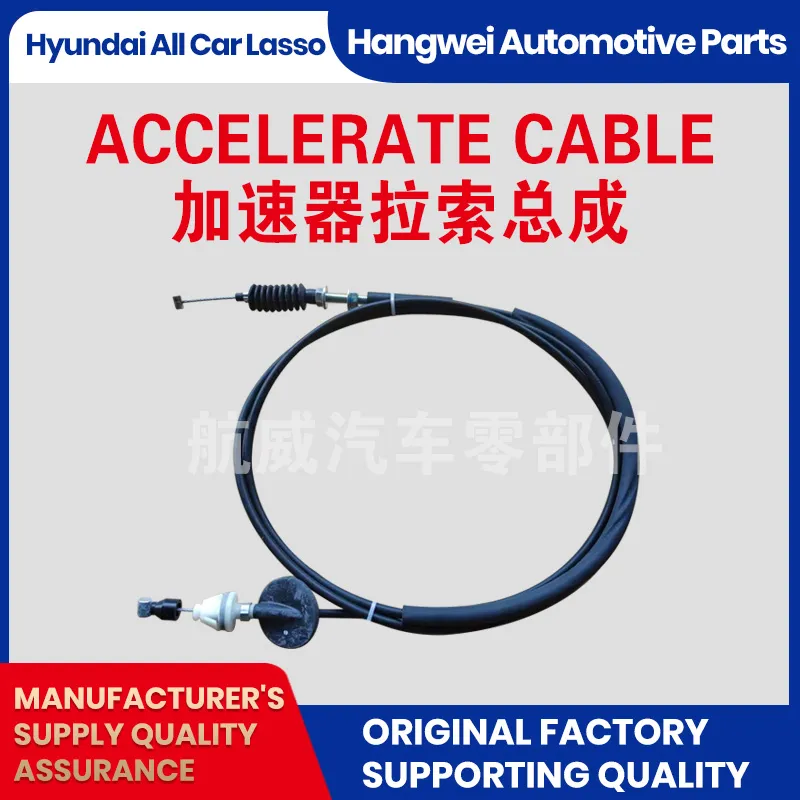throttle control cable
Understanding Throttle Control Cables A Comprehensive Overview
Throttle control cables are an essential component in various vehicles and machinery, playing a crucial role in the modulation of engine power and speed. Commonly found in automobiles, motorcycles, snowmobiles, and marine applications, these cables provide a mechanical link between the accelerator pedal or handle and the throttle body or valve of the engine. Understanding how throttle control cables function, their construction, potential issues, and maintenance can greatly enhance a vehicle owner’s ability to manage their machinery effectively.
Construction and Function
Throttle control cables typically consist of a flexible outer casing, often made of durable plastic or metal, and an inner wire core that moves within this casing. The inner wire is usually constructed from high-strength steel, which provides the necessary tensile strength while allowing for flexibility. When the driver presses the accelerator pedal, it pulls on one end of the cable, causing the inner wire to slide through the outer casing. This movement directly opens or adjusts the throttle valve in the engine, thereby controlling the air-fuel mixture and, consequently, the vehicle's speed.
The design of throttle control cables varies depending on their application. For instance, in high-performance vehicles, cables may be engineered with minimal resistance to ensure rapid response times. In contrast, those used in heavier machinery may be built to withstand more substantial forces and environmental factors.
Common Issues
While throttle cables are designed for longevity, they are not immune to wear and tear. Over time, cables can fray, corrode, or become stiff due to exposure to elements such as dirt, moisture, and varying temperatures. Symptoms of a failing throttle cable may include sluggish acceleration, erratic engine performance, or a complete inability to control engine speed. Such issues can not only diminish overall performance but can also pose safety hazards. Thus, regular inspection and maintenance are essential.
Another significant problem is cable binding, which occurs when the cable does not move smoothly within its casing. This can result from dirt accumulation, improper installation, or wear. Binding can lead to inconsistent throttle response, making it challenging to maintain control over the vehicle’s speed.
Maintenance Tips
throttle control cable

Regular maintenance of throttle control cables is crucial for ensuring smooth operation. Here are some essential tips
1. Inspection Routinely check the cable for signs of wear, fraying, or corrosion. Pay close attention to the inner wire and outer casing, especially at connection points.
2. Lubrication Most manufacturers recommend applying lubricant to the cable and its connection points. This can reduce friction and help prevent binding, ensuring smooth operation.
3. Proper Routing Ensure that the throttle cable is routed correctly and isn’t kinked or pinched, as this can lead to premature wear.
4. Replacement If you notice any serious signs of damage or excessive fraying, it’s crucial to replace the cable to prevent failure. Always refer to the manufacturer's guidelines for the correct type and installation procedures.
5. Environmental Protection Protect the throttle cable from harsh conditions whenever possible. Use protective sheaths or covers if operating in extreme environments.
Conclusion
Throttle control cables may seem like a small component in the grand scheme of vehicle mechanics, but their importance cannot be overstated. They serve as a vital connection between the operator's intent and the engine's response, making them fundamental to a vehicle’s performance and safety. Regular inspection and maintenance can help prolong the life of these cables and ensure optimal operation. For vehicle enthusiasts or casual drivers alike, understanding and caring for the throttle control cable can lead to a smoother and more enjoyable driving experience. As with any component, staying informed and proactive is key to maintaining vehicle performance and safety on the road or trail.
-
Upgrade Your Vehicle with High-Quality Handbrake CablesNewsNov.01,2024
-
Optimize Your Bike's Performance with Quality CablesNewsNov.01,2024
-
Enhance Your Vehicle's Performance with Quality Clutch ComponentsNewsNov.01,2024
-
Elevate Your Vehicle's Performance with Quality Throttle CablesNewsNov.01,2024
-
Elevate Your Vehicle's Performance with Quality CablesNewsNov.01,2024
-
Affordable Solutions for Your Cable NeedsNewsNov.01,2024
